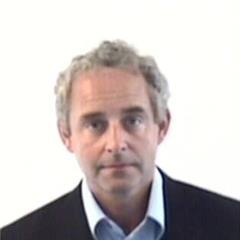Water
SUEZ increases by 30% the hydraulic capacity of Søholt wastewater treatment plant thanks to biomass densification technology, first-of-its-kind in Scandinavia
SUEZ and Silkeborg Spildevand A/S signed a contract on 22th September 2023 for an upgrade of Søholt wastewater treatment plant (WWTP) in Silkeborg, Denmark. With the signing of the 5.550.000 DKK (745.000 €) agreement, Silkeborg Spildevand A/S entrusts SUEZ to increase hydraulic capacity of the existing plant by spring 2024, while protecting biodiversity.
SUEZ was selected to increase the hydraulic capacity of the existing Søholt wastewater treatment plant in Silkeborg, 99.480 P.E. (population equivalent). The project will be launched in early October 2023 with completion and operation scheduled for spring 2024.
The plant is located in Silkeborg, city known for hilly terrain in the lake highlands of Central Jutland with forested hills and with the Gudenå River. The area with the local water ecosystem is vulnerable and therefore nationally protected.
Upgrading Søholt wastewater treatment plant with the inDense solution, that significantly increases efficiency and hydraulic capacity, will enable to treat 30% higher wastewater flow (during rain events) without the need to expand its physical footprint. The implementation of inDense also addresses critical environmental concerns by reducing wastewater overflows into the local lakes and by preventing sludge blanket escapes during the winter months, thereby safeguarding the fragile aquatic recipient – Gudenå River.
The agreement signed between Silkeborg Spildevand A/S and SUEZ in Denmark represents a strategic milestone as it marks the first-ever implementation of the biomass densification solution in Scandinavia. This project underscores SUEZ's commitment to bringing resilient and innovative solutions to the local water market, further enhancing its presence in the region.
The plant is located in Silkeborg, city known for hilly terrain in the lake highlands of Central Jutland with forested hills and with the Gudenå River. The area with the local water ecosystem is vulnerable and therefore nationally protected.
Upgrading Søholt wastewater treatment plant with the inDense solution, that significantly increases efficiency and hydraulic capacity, will enable to treat 30% higher wastewater flow (during rain events) without the need to expand its physical footprint. The implementation of inDense also addresses critical environmental concerns by reducing wastewater overflows into the local lakes and by preventing sludge blanket escapes during the winter months, thereby safeguarding the fragile aquatic recipient – Gudenå River.
The agreement signed between Silkeborg Spildevand A/S and SUEZ in Denmark represents a strategic milestone as it marks the first-ever implementation of the biomass densification solution in Scandinavia. This project underscores SUEZ's commitment to bringing resilient and innovative solutions to the local water market, further enhancing its presence in the region.
Rune Røjgaard Andreasen, Process engineer, ph. D says, “At Silkeborg Forsyning we strive to minimize our wastewater overflows. The expected increase in hydraulic capacity gained through this project corresponds to the gain of 1-2 new clarifiers, which would be both expensive and hard to fit in within the WWTP area due to a significant footprint. This case thereby presents, both a good business case and an elegant solution of footprint issues for our WWTP.”
